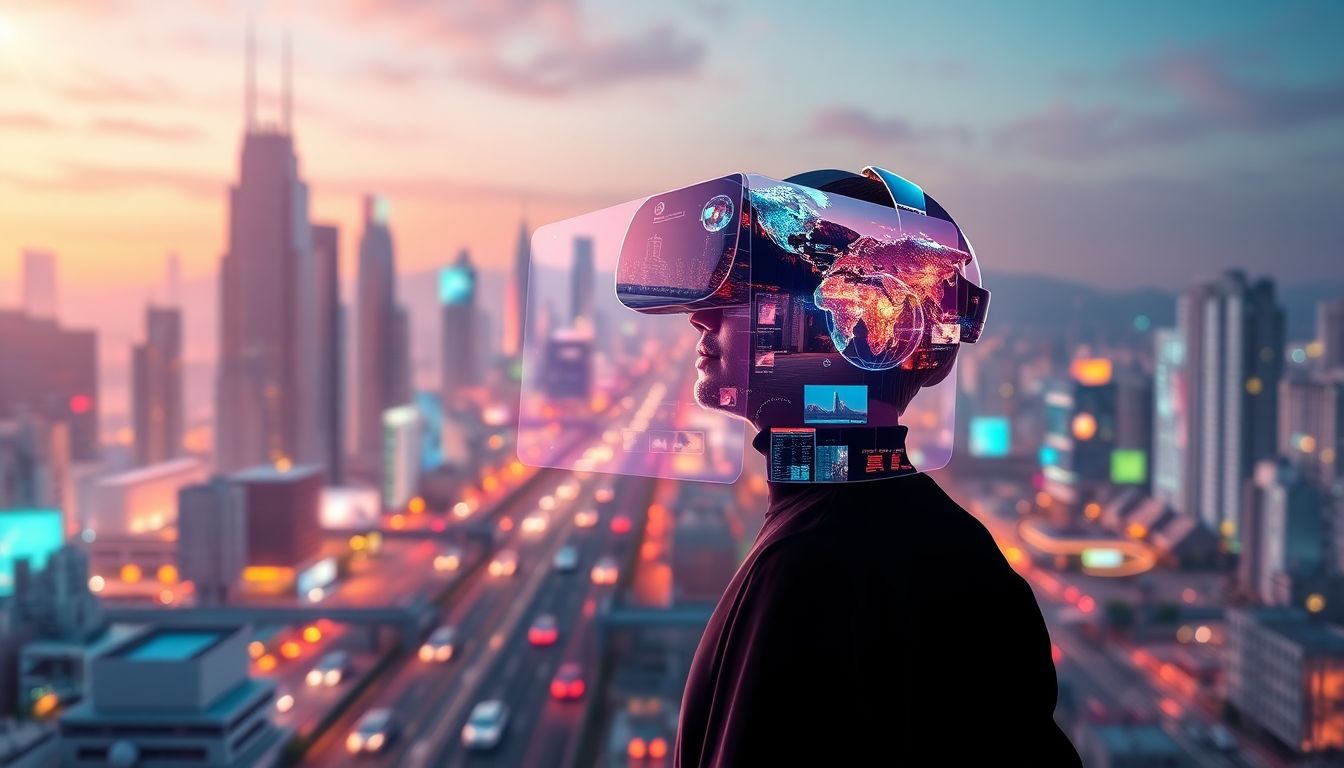 |
Augmented Reality (AR) vs. Virtual Reality (VR): What's the Difference?
Introduction: Stepping into the Metaverse—AR and VR's Distinct Roles
In the expanding universe of technology, Augmented Reality (AR) and Virtual Reality (VR) stand out as fascinating tools. They transform how we experience the world through digital means. Although both offer immersive experiences, they are fundamentally different in how they function and what they provide.
The Blurred Lines of Immersive Technology
The rapid evolution of these technologies can make it hard to distinguish between them. While both aim to enhance our perception, AR adds digital elements to the real world, and VR creates a completely separate digital environment. Understanding these differences helps in choosing the right tool for your needs.
Defining Augmented and Virtual Reality
Augmented Reality (AR) overlays digital content onto the real world. It interacts with your surroundings, enhancing what you see. Think of AR as adding layers of information to your everyday view.
 |
Virtual Reality (VR) transports users into an entirely different universe. With VR, you wear goggles and are immersed in a full digital environment, disconnected from your physical surroundings.
 |
Why Understanding the Difference Matters
Understanding these distinctions is crucial for applications ranging from education to marketing. Knowing which technology fits your needs can enhance user engagement, learning, and even entertainment.
Understanding Augmented Reality (AR)
How AR Works: Blending the Real and Digital Worlds
AR technology uses devices like smartphones or smart glasses to combine computer-generated images with real-world scenarios. This interaction happens in real-time, allowing users to engage with the digital content while still being aware of their environment.
Examples of AR in Action: From Gaming to Retail
- Gaming: Pokémon GO is a prime example where players capture digital creatures in real-world locations.
- Retail: IKEA allows customers to see how furniture looks in their homes through a mobile app.
- Education: Apps that let students visualize 3D anatomy models while in the classroom.
The Future of AR: Trends and Predictions
- Statistics: The AR market is expected to reach $97.76 billion by 2028, growing at a CAGR of 43.8% from 2021 to 2028.
- Trends: Expect advancements in AR glasses and broader application in industries like healthcare and tourism.
Exploring Virtual Reality (VR)
The Mechanics of VR: Total Immersion
VR systems rely on headsets that completely cover your eyes and ears, isolating you from your surroundings. Sensors track your movements, making it feel like you're truly inside the digital space.
Popular VR Applications: Gaming, Training, and Beyond
- Gaming: Titles like Beat Saber offer engaging ways to work out while having fun.
- Training: VR is widely used in fields such as aviation, healthcare, and military training to provide risk-free environments for practice.
- Virtual Tours: Museums and travel companies use VR to offer tours of distant places without leaving home.
The Immersive Experience: Advantages and Limitations
Advantages:
- Fully immersive experiences.
- Enhanced learning through realistic simulations.
Limitations:
- Potential for motion sickness in some users.
- Requires expensive equipment.
AR vs. VR: A Head-to-Head Comparison
Key Differences: Technology, Experience, and Applications
- Technology: AR enhances reality; VR creates a new one.
- Experience: AR allows interaction with both worlds, while VR offers a complete escape.
- Applications: AR fits well in everyday tasks; VR excels for immersive experiences.
Use Cases: Where Each Technology Shines
- AR: Perfect for retail, education, and marketing.
- VR: Best for gaming, intense training, and virtual tourism.
Choosing the Right Technology for Your Needs
Assess your goals carefully. If you want to enhance real-world tasks, AR is the better choice. However, if you're seeking complete immersion, go for VR.
The Convergence of AR and VR
Mixed Reality (MR): Bridging the Gap
Mixed Reality combines elements of both AR and VR. It uses headsets that allow interaction with digital objects while still being in a real environment. This technology is gaining traction in fields like architecture.
Extended Reality (XR): The Umbrella Term
XR encompasses all forms of immersive technology, including AR, VR, and MR. As advancements continue, XR will likely redefine how we interact with technology altogether.
Future Collaboration and Innovation
Expect collaborations between industries to expand AR and VR's applications. Partnerships could lead to innovative solutions for various fields, from healthcare to entertainment.
Conclusion: Navigating the Immersive Landscape
Key Takeaways: Understanding AR and VR's Unique Strengths
- AR enhances your reality, while VR creates a new one.
- Consider your objectives to choose the right technology.
- Both AR and VR are rapidly evolving, offering vast potential.
Actionable Tips: Choosing the Right Technology for Your Project
- Identify your project goals.
- Weigh the pros and cons of AR and VR.
- Stay informed about new developments and trends in immersive technologies.
By understanding both Augmented Reality and Virtual Reality, you'll be better equipped to utilize these technologies effectively for your needs. Make the leap into the immersive world today!







0 Comments